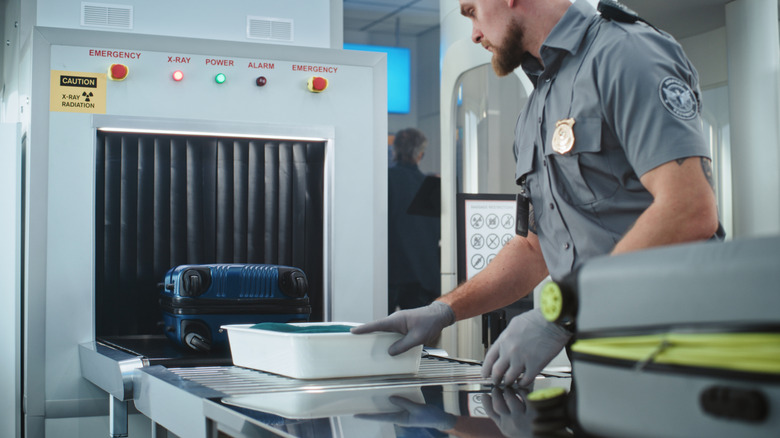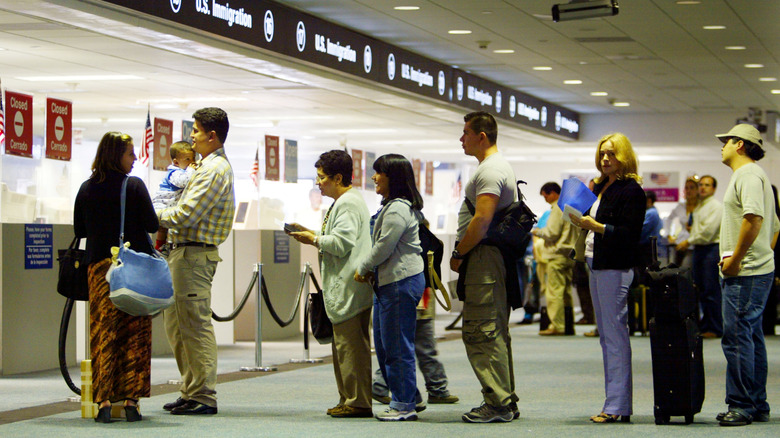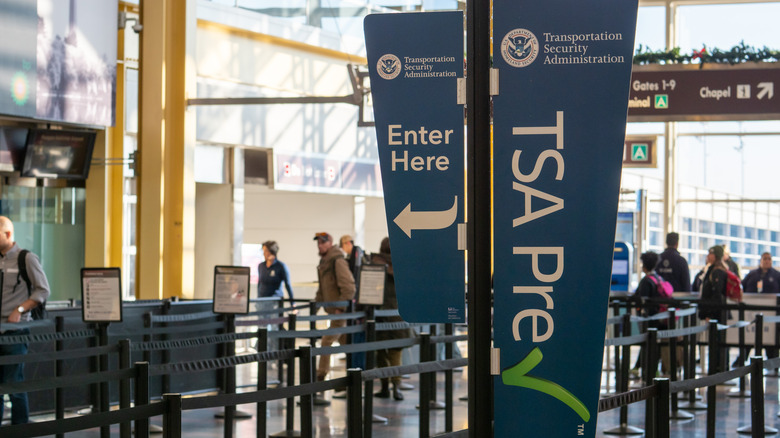Which Is Truly Best: TSA PreCheck Or Global Entry?
The worst thing about traveling isn't the steep prices or the mishaps (one is sort of inevitable, and the other is part of the adventure). Instead, the thing most travelers truly dread is having to get through airport security lines. No one likes making a long line, and then having to deal with the hassle of taking off belts, jackets, and shoes while also getting out laptops and iPads out of stuffed suitcases — all while worrying about making a flight on time. If Italian writer Dante had been born in the 21st century, he'd certainly have made airport security one of the seven circles of hell.
So hellish is this part of traveling that the U.S. government realized it could capitalize on it by offering a better experience to travelers willing to do a background check and dole out some cash. This is how we got TSA PreCheck and Global Entry. Both programs give you access to expedited lines and let you pass through security without removing jackets, belts, shoes, or electronics. This makes the entire security process significantly faster. Although there are reasons you could be denied or suspended from TSA PreCheck, if you are a U.S. citizen or permanent resident with no criminal records, these programs are the closest you'll get to airport heaven. They are worth it if you travel even once a year to or from a U.S. airport. Many travelers wonder which program is the best choice. In my experience, there is absolutely no doubt: Global Entry blows TSA PreCheck out of the water.
The pros of Global Entry
Nothing in this life is perfect, so you may wonder if Global Entry is worthwhile. Let's start with everything that's great about the program. Its biggest strength is that it includes all the perks of TSA PreCheck. That's right, you won't have to feel dehumanized as you dirty your socks on the gross airport floors or struggle to put your laptop into your carefully-packed backpack. With TSA PreCheck, the perks only apply to national flights, which is nice, but the expedited process is often more needed when returning from an international flight.
Global Entry allows you to breeze through immigration when coming back into the U.S. The whole point of these programs is to expedite lengthy security screenings for those who are approved as "trusted travelers" who have undergone extensive background checks. Global Entry's landing process is so fast and simple that I often take longer getting from the plane to immigration than passing through the checkpoint. More often than not, there is no line, and in the three years I've had Global Entry, the longest queue I've been in only had 10 people (yes, I counted). Most of the time, you arrive at the exclusive Global Entry line, take a picture, and then go up to the counter. Though sometimes agents ask a few questions, they usually just say hi and let you pass through without even stopping.
The cons of Global Entry
There are mainly two aspects in which TSA PreCheck is better than Global Entry: price and processing time. However, the first isn't really a big advantage when you break up the numbers. TSA PreCheck costs $76 to $85, depending on the provider, and is valid for five years. On the other hand, Global Entry costs $120 but is also good for five years. This means that PreCheck comes out to $15.35 to $17 per year while Global Entry ends up costing $25 per year. For a mere extra $8 to $10 per year, you get to enjoy the perks of being a trusted traveler on both national and international flights. Besides, many credit cards reimburse you for the Global Entry application fee, so you could potentially pay nothing for it.
Processing time is the only actual drawback of Global Entry, as it can take anywhere from two weeks to over a year — my application took an entire nine months. TSA PreCheck is faster, taking anywhere from three to 60 days. If you're in a rush, this could be a good option, though being stuck with only national perks for five entire years just to get approved on time for a single flight doesn't seem like a wise choice. TSA PreCheck is only worth it for travelers who are absolutely certain that they won't be leaving the country for five years. Otherwise, Global Entry is the best program for almost anyone, including infrequent travelers.


